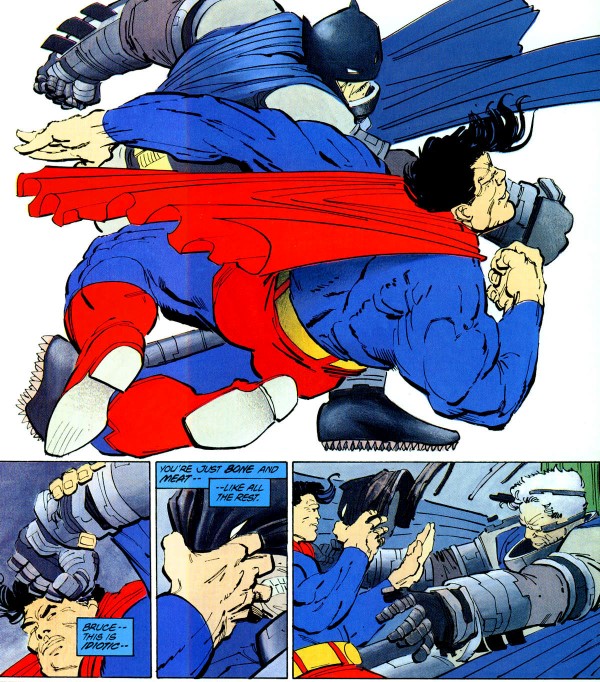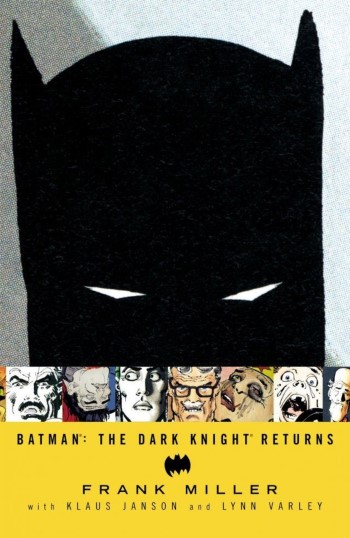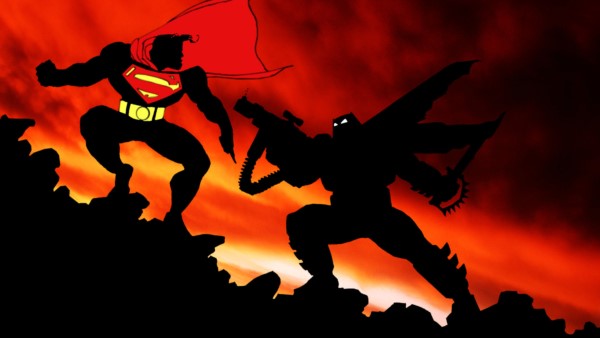
With Batman and Superman facing off in theaters, it’s a prime time to revisit a graphic classic
Critics and fans have been debating Batman v Superman: Dawn of Justice since it was released on March 25, with varying results. Some say it’s a mess of a film structurally. Some say the darker tone of both heroes doesn’t make sense. And some (like me) say it’s entertaining as hell, regardless of its flaws. However, some of director Zack Snyder’s polarizing creative choices can be traced back to his main inspiration: Frank Miller’s The Dark Knight Returns book series.

TDKR (not to be confused with Christopher Nolan’s film The Dark Knight Rises) was released in 1986 to critical acclaim, all due to its mature, grim take on the Caped Crusader. The four-part series (which was collected in trade paperback form) focuses on Bruce Wayne’s struggle with an unavoidable truth: getting old. But instead of getting through his midlife crisis with a Corvette and some hair dye, he does the only thing he knows to do: dress up as a nocturnal winged mammal and beat the crap out of bad guys. You know—the usual.
Getting back into action after a 10-year break is an invigorating—albeit physically daunting—escape for Bruce, but of course, when Batman comes out of the shadows, so do the crazies. Notably, the Joker and Two-Face play pivotal roles in the story, but surprisingly, villains aren’t the only ones out for Batman’s head. The climax comes when the Dark Knight goes head-to-head with Superman, who is sent in by the President (a fitting parody of Reagan) to deal with Gotham’s returning vigilante problem. The two face-off in what is arguably the best portrayal of the two battling ever put into ink.
Snyder takes a lot of cues from this fight for BvS, mixing Superman’s brute force and Batman’s intellect for a balanced fight that is as interesting to watch as it was to see on the page. But this isn’t the only point in which the film imitates the novel. Batfleck’s suit design is almost identical to Miller’s version; battles with thugs are pulled almost panel-for-panel; and the broadcast media dominates the debate on superheroes and are heavily utilized throughout each story. Snyder even pulls Alfred’s quip about Bruce not leaving any wine in the cellar for the next generation of Waynes (not that he thinks there will be any) directly from the first volume. These uses are solid examples of how to service comic fans and creators without sacrificing your own spin on a narrative concept.
While this won’t come as a surprise to those familiar with Miller’s work on Sin City and Daredevil, this Batman continuity is gritty and grounded. Batman’s really just about had enough of everyone’s crap, and has to fight the urge to kill his enemies. While he still won’t kill, he’ll paralyze you if he gets the opportunity, and has added rubber bullets and fear toxins into his arsenal. Odds are, if you’re up against Batman in TDKR, you’ll go home with more than a just few bruises. This is a brutal Batman, and that’s a bit harder to swallow on film. But, on the page, Miller makes it work. His words show the mental process of a man who knows he’s always a second away from death, with illustrations that may be rough around the edges but convey the weirdness of Gotham and the brutality of this continuity.
Furthermore, Miller is often praised for his page layout; such praise is applicable here, with easy-to-follow 16-panel pages that occasionally get interrupted by stunning full-page illustrations of Batman swinging into action. In these panels especially, Miller captures the power of Batman, despite our knowledge of Bruce’s declining physical health. That’s what The Dark Knight Returns, Batman v. Superman, and Batman himself are all about to the end, really: the power of one to fight for change and do what’s right. Even if it’s not pretty, it’s powerful, and that’s all we need.













